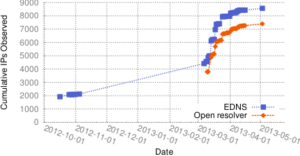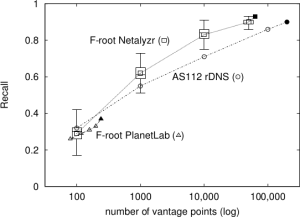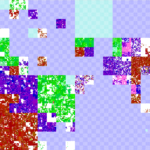We just released a new technical report “A Holistic Framework for Bridging Regional Threats to User QoE”, ISI-TR-2013-687, available as https://www.isi.edu/~johnh/PAPERS/Cai13c.pdf
From the abstract:
Submarine cable cuts have become increasingly common, with five incidents breaking more than ten cables in the last three years. Today, around~300 cables carry the majority of international Internet traffic, so a single cable cut can affect millions of users, and repairs to any cut are expensive and time consuming. Prior work has either measured the impact following incidents, or predicted the results of network changes to relatively abstract Internet topological models. In this paper, we develop a new approach to model cable cuts. Our approach differs by following problems drawn from real-world occurrences all the way to their impact on end-users. Because our approach spans many layers, no single organization can provide all the data needed to apply the model. We therefore perform what-if analysis to study a range of possibilities. With this approach we evaluate four incidents in 2012 and 2013; our analysis suggests general rules that assess the degree of a country’s vulnerability to a cut.
![Estimated impact on user QoE in four cable cut incidents (Figure 13 from [Cai13c])](http://ant.isi.edu/blog/wp-content/uploads/2013/12/qoe_play_time_350k_vod_3d_all-300x200.png)
![[Calder13a] figure 5a](http://ant.isi.edu/blog/wp-content/uploads/2013/10/Calder13a_icon-300x156.png)




